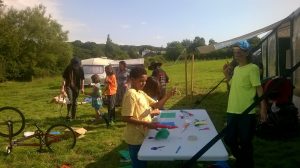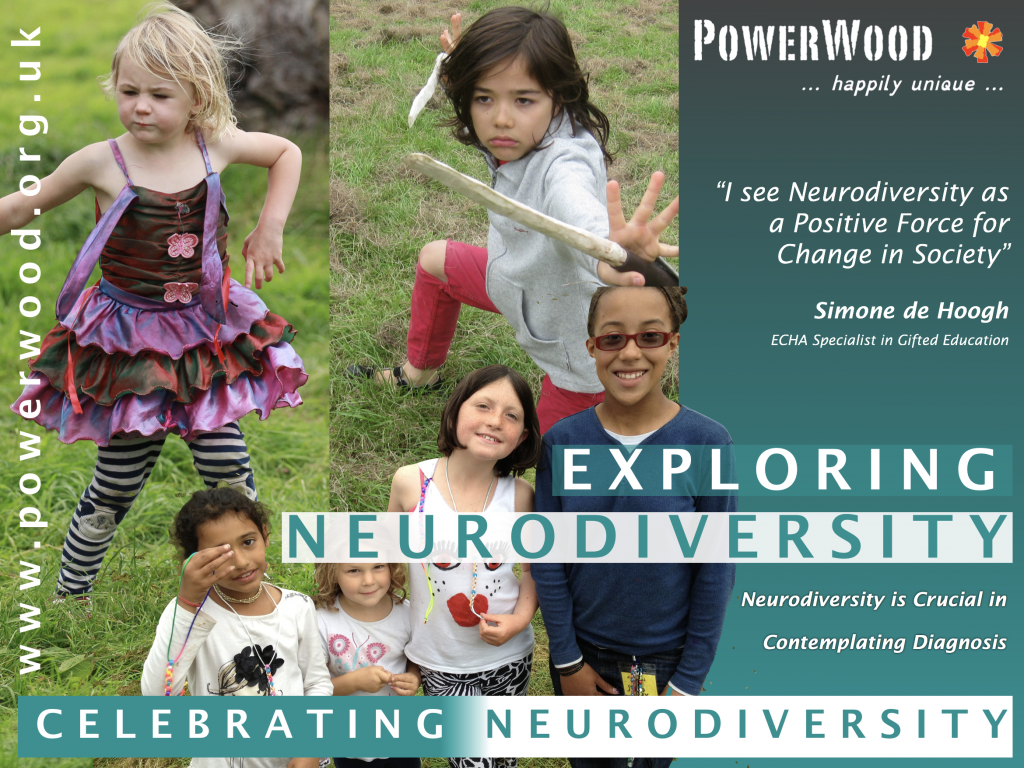Unfortunately, many intense, sensitive, over-excitable, more-able neurodiverse children, teenagers (and adults) are being mis-diagnosed or labelled by educational and health care professionals. The most common misdiagnosis are: Attention Deficit Hyperactivity Disorder (ADHD), Oppositional Defiant Disorder (OD), Obsessive Compulsive Disorder (OCD), and Mood Disorders such as Cyclothymic Disorder, Dysthymic Disorder, Depression, and Bi-Polar Disorder.
 Ignorance
Ignorance
These common misdiagnoses stem from an ignorance among professionals about specific social and emotional characteristics of over-excitable more-able children which then are mistakenly seen by these professionals as characteristics of psychological disorders.
Doubt about Diagnosis
Parents who come in contact with PowerWood have sometimes children who have been diagnosed with a psychological disorder while their parents don’t feel confident about or sometimes even doubt the diagnosis and feel relieved when they learn how they can support children, teenagers or young adults appropriately.
Further Reading
We would like to recommend the following book:
‘Misdiagnosis and Dual Diagnosis of Gifted Children and Adults: ADHD, Bipolar, OCD, Asperger’s, Depression, and other Disorders’ written by Jim Webb and his colleagues.

Great Potential Press
You can also read more in this SENG article
“… a modern tragedy. many of our brightest, most creative, most independent thinking children and adults are being incorrectly diagnosed as having behavioural, emotional, or mental disorders.” James T. Webb
Emotion Regulation
Multilevel Emotion Regulation Theory (MERT) is a holistic theory developed by Simone de Hoogh. The theory explains how neurodiverse (young) individuals and parents of neurodiverse children can develop emotional regulation skills and direct their energy towards self-chosen goals, and contribute to society.
Exploring Neurodiversity – E-Book
FREE for FRIEND PowerWood Community members.
By Simone de Hoogh and other Active Contributors
PowerWood’s ‘Exploring Neurodiversity’ E-Book will give you insights in:
- What PowerWood’s stance is on Neurodiversity
- What the value is of Neurodiversity
- Why is it crucial in contemplating seeking a diagnosis
- What the positive sides are of being Neurodiverse
- Contemplating a diagnosis and what are the advantages and disadvantages
PowerWood’s Community
Find understanding, tools and strategies that work in an understanding, respectful and compassionate Community.
PowerWood can be your and your families advocate and your second family.
Explore how joining our PowerWood community by becoming a member will benefit you and your family and what types of memberships are available.
Join our Community
Available to Members*
*Booking a one-off Free Introductory Talk of 45-60 minutes by Skype or FaceTime with Senior Consultant Simone de Hoogh is one of the benefits of being either a FreeBee PowerWood Community Member or a Friend PowerWood Community Member.
Book a FREE Introductory Talk with a Professional*
You can read more about PowerWood’s Consultancy Sessions, the Benefits of a Free Introductory Talk and PowerWood’s Consultancy Services Tiered Fee Structure.
*Overexcitability Test
OE (Overexcitability) is an element of a Developmental Theory –Theory of Positive Disintegration by Dabrowski- that is one of the underpinning theories of MERT (Multi-level Emotion Regulation Theory) developed by Simone de Hoogh. Overexcitability explains and allows us to look at ‘extreme’ behaviour as a valuable asset in our or our children’s life.
Find out if you or your child has OE (OverExcitability) as well
*Boundary Test
A HUGE thank YOU to the son and daughter of Ernest Hartmann’s who gave PowerWood permission to use and put the full academically approved questionnaire about the Boundary in the Mind on PowerWood’s website.
Find out how the Boundary in the Mind affects you or your child

